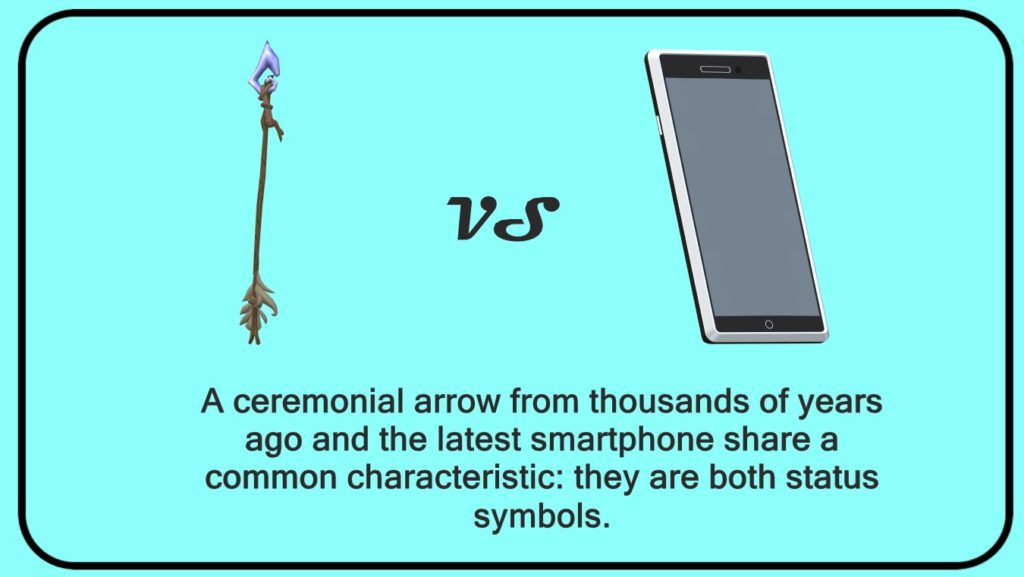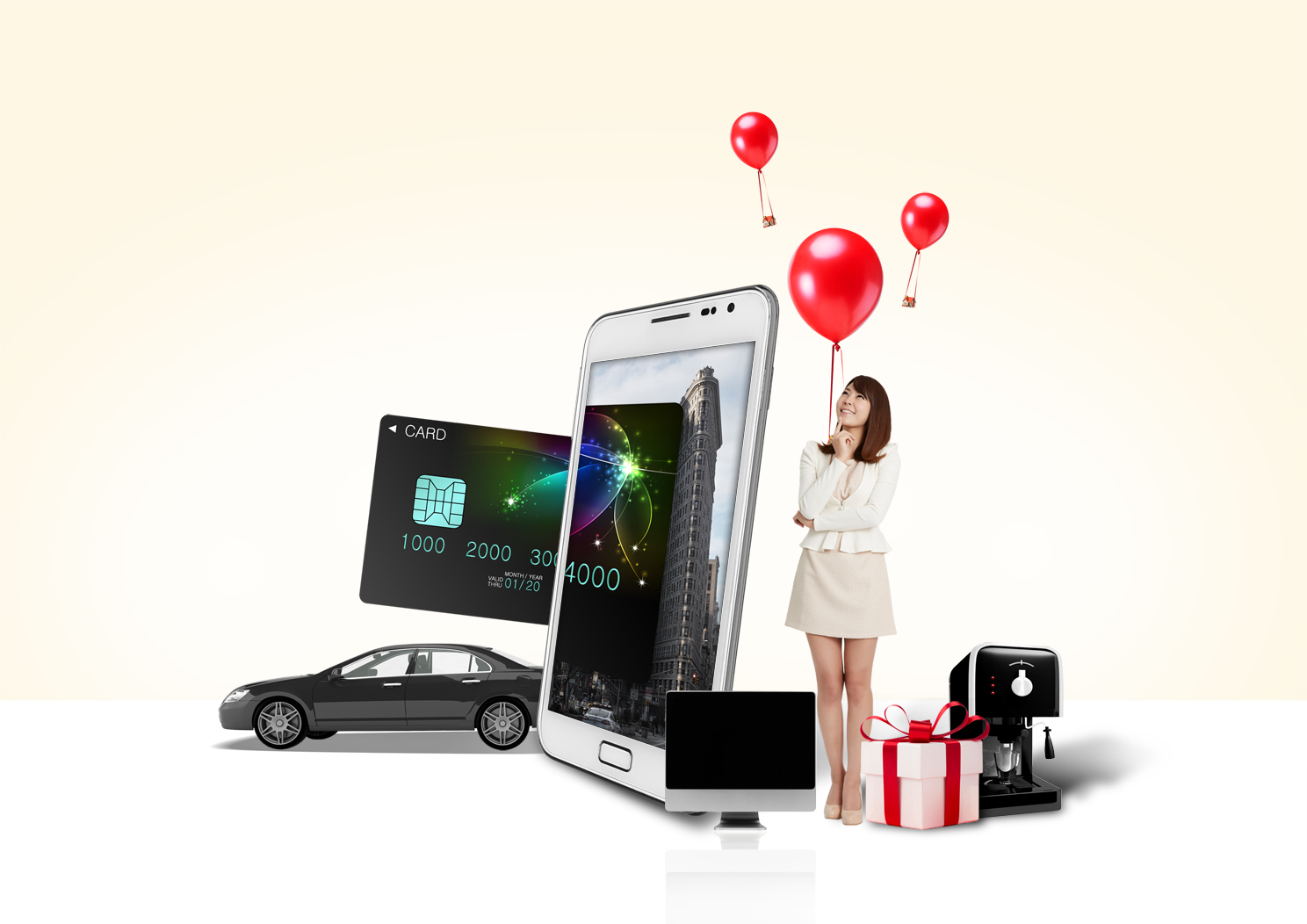It Pays to Be Behind the Times
Is the compulsion to buy the best, fastest, and newest items a symptom of consumerism gone wild or is there something more subtle at play?
Written by William Urbanski.
One of the most interesting discoveries that has come from the field of anthropology is that even the earliest humans attached special importance to rare or otherwise special objects that had little or no practical value. Since these objects – be they seashells, feathers, or polished stones – didn’t really serve much of a purpose in survival, it has been deduced that they held ceremonial significance or acted as status symbols. So, it would seem that our need to show off our shiny new phones, jewellery, or cars is actually somehow coded into our DNA. Now, there’s nothing wrong with enjoying a new watch or being happy about purchasing a vehicle, but when the need to show off our purchases becomes a priority, and an obsession that plunges the consumer into debt or an ongoing cycle of unhappiness, that’s the point where Cro-Magnon would be throwing his obsidian spear to the ground in disgust.
Trying to always have the best, brightest, and newest gadget, clothing item, or car is a vicious cycle that seems to have its origins in demanding the newest, brand name products: a trait that seems to be held up as a virtue by some. There are a number of traps associated with conspicuous consumption: One is that you are paying for the privilege of being one of the first; the second is what prominent financial blogger Mr. Money Moustache calls “minor details exaggeration syndrome.” What this all stems from is the practice of attaching an inflated value to the newest versions of products and even feeling that iterations from previous years are inferior and that to use them is demeaning. People are generally aware that overpaying for a purchase is not a good thing, so could there be more than meets the eye when people are “flexing” their new consumer products? The impulse to participate in consumer culture is strong, and so is the compulsion to buy the newest gizmos. Whatever the motivation for wanting the latest and fanciest things, there are some compelling instances where it actually pays to be behind the times.
Car Crazy
You’ve probably heard that buying a brand new car is financially one of the stupidest things you can do. This is mainly because of the rapid depreciation in value that occurs within the first three to four years of a car’s usage. Another rule of thumb is that when driving a brand new car off the lot, it loses ten percent of its value right away. Ten percent! So what explains the fact that people not only in Korea but around the world buy new cars? Financial illiteracy certainly plays a part, but there is the firm and obstinate belief that brand new cars are so much better than used ones that the ridiculously inflated price is justified. Sure, sure, the newest model may have some features that ostensibly improve the overall driving experience (extra camera, heated steering wheel, internet connectivity, etc.), but keep something in mind: Cars haven’t really changed that much over the past 50 or so years. They still have four wheels, a few seats, and do pretty much the same thing as they did in the 1970s (or before). The difference between a 2020 model and a 2016 model of a car may be noticeable, but the sum of the factors that really set them apart is actually negligible. As well, even if you get a car with all the fancy little features in the exact shade of gray you wanted, your car is still one of millions on the road, so the minor differences that you spent time and effort worrying about to distinguish your car from all the others actually amount to jack diddly squat.
Another often overlooked aspect of new tech in cars is how they actually create worse drivers. Two examples stick out: GPS systems and so-called “back up cameras.”
I am of the unwavering belief that a major reason for the terrible drivers on the road nowadays (in Korea and back home in Canada) stems from virtually all vehicles having and pretty much all drivers completely relying on GPS. A while ago, when driving to another city with a Korean friend of mind, he was very surprised that I didn’t have a GPS and wasn’t constantly checking where I was going. Roads and highways, people seem to forget, contain an inherent logic in their numbering schemes that actually makes it easy to know where you’re going. A classic example is the interstate system in the USA in which odd-numbered highways always run north to south and even numbers run east and west. Believe it or not, people actually used to be able to get around without having a glowing rectangle on their dashboard beeping at them every ten seconds. They did this by being able to read and give good directions. The prevalence of GPS in vehicles has robbed drivers of their sense of navigation, and I actually pity those who never learned to get around without one.
Back-up cameras are just useless pieces of caca, and anyone who can’t back up by using only the mirrors and, you know, turning their head to look where the damn car is going, has no business being behind the wheel. Both GPS and back-up cameras make people pay less attention to what’s going on around them.
Phone Follies and 5G
Anyone who’s talked to a sales rep about getting the latest model of a phone knows how expensive and restrictive the contracts are. All questions about the nature and fairness of contracts aside, the question you should be asking is: Is there really any way to justify purchasing the latest model of any phone? Take, for example, the newest Galaxy phone, the S20. Now, there’s no question at all that this is a magnificent machine, and I’d be lying if I said I didn’t want one. But, at the same time, there is absolutely no way I could justify dropping a grand to do so, especially when the tech that’s packed into it is far above what I or most other people could possibly need. I’m not going to get into the specifics of what makes the S20 more technologically advanced than its predecessor (the S10), but let’s just say it’s a little faster, has a few more pixels per square centimeter and has a camera that’s easily good enough for taking pictures of your coffee and then uploading onto Instagram. There’s also a lot of buzz about the 5G network (whatever that is) and how the S20 would be able to connect to it or something. But c’mon, all anyone is going to use 5G for is to play virtual reality video games. As well, the infrastructure for 5G isn’t even fully in place yet.
In this day and age, a phone is a necessity, but it’s also really just a portable communication device, and any phone that can make calls and send text messages is good enough. For a number of years in Korea I had a phone that couldn’t even use Kakao Talk and you know what? I didn’t die.

Like new cars mentioned above, phones (especially in Korea) suffer from rapid depreciation, which, for the savvy customer, means you can get a really good, mint-condition phone from two years ago for a great price. Furthermore, if you can hold onto your current phone for a little longer, when you finally do upgrade, you’ll be all more appreciative of the benefits it brings, instead of complaining that you can’t upload your silly dance videos to TikTok (whatever that is) fast enough.
Expressing Yourself Through Buying Stuff
As alluded to above, I am willing to wager that most people are aware that certain expensive luxury items are mere status symbols. I would further postulate that people would also not hesitate to criticize the “shallow” and “materialistic” one percent of people who revel in their Mercedes full of Gucci bags and Rolex watches. So, why then does anyone continue to buy products that fulfill more than the absolute minimum criteria at the lowest possible price? The answer goes deeper than the ingrained impulse to participate in conspicuous consumption.
Somewhere along the line, people stopped buying things because they needed them or wanted them, and started buying things because their purchases became a way to express their identity. As explained in Sheena Ayengar’s book “The Art of Choosing,” as production methods in the last hundred years or so improved, manufacturers were faced with the problem of what to do with the surplus products they were able to make. So, by adopting innovations in advertising and fashion, they pushed up demand by transforming the act of purchasing from practical to a self-expressive one. Think about it: Are you an Apple person or an Android person? These products do the same things, but choosing one over the other is perceived as an expression of identity and values.
Expressing yourself through purchases is just plain silly. Express yourself through art, through fitness, through education, and through skill development. The next time you go shopping, fight the powerful impulse to express yourself through your purchases by being just a little bit behind the times.
THE AUTHOR
William Urbanski, managing editor of the Gwangju News, has an MA in international relations and cultural diplomacy. He is married to a wonderful Korean woman, always pays cash, and keeps all his receipts. Instagram: @will_il_gatto





